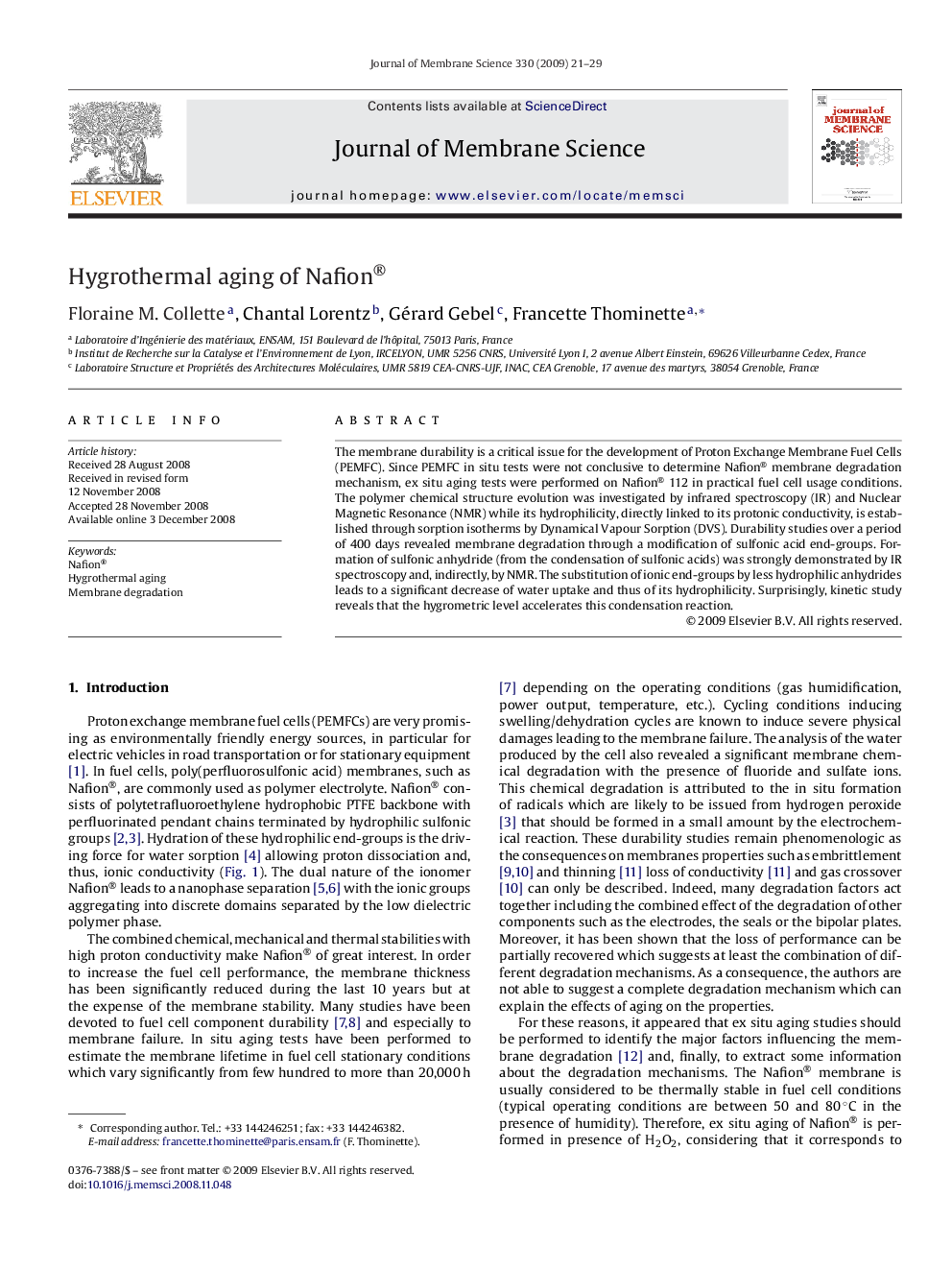| Article ID | Journal | Published Year | Pages | File Type |
|---|---|---|---|---|
| 637164 | Journal of Membrane Science | 2009 | 9 Pages |
The membrane durability is a critical issue for the development of Proton Exchange Membrane Fuel Cells (PEMFC). Since PEMFC in situ tests were not conclusive to determine Nafion® membrane degradation mechanism, ex situ aging tests were performed on Nafion® 112 in practical fuel cell usage conditions. The polymer chemical structure evolution was investigated by infrared spectroscopy (IR) and Nuclear Magnetic Resonance (NMR) while its hydrophilicity, directly linked to its protonic conductivity, is established through sorption isotherms by Dynamical Vapour Sorption (DVS). Durability studies over a period of 400 days revealed membrane degradation through a modification of sulfonic acid end-groups. Formation of sulfonic anhydride (from the condensation of sulfonic acids) was strongly demonstrated by IR spectroscopy and, indirectly, by NMR. The substitution of ionic end-groups by less hydrophilic anhydrides leads to a significant decrease of water uptake and thus of its hydrophilicity. Surprisingly, kinetic study reveals that the hygrometric level accelerates this condensation reaction.
